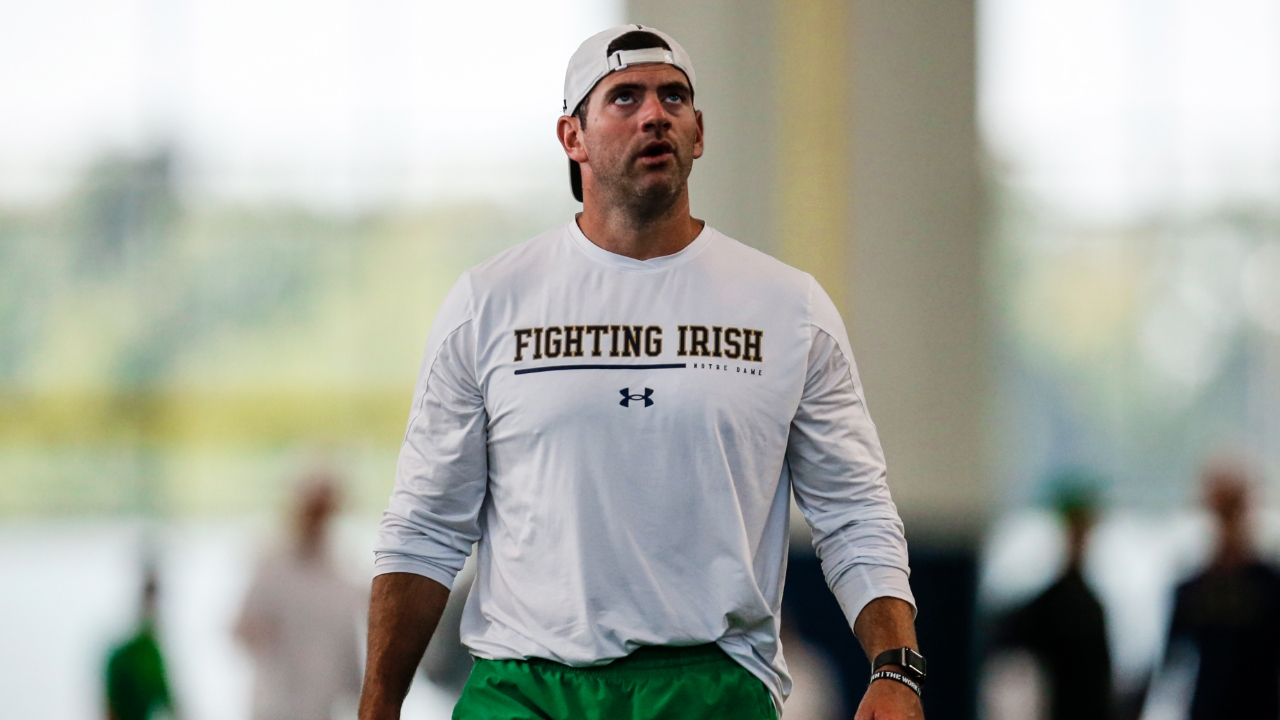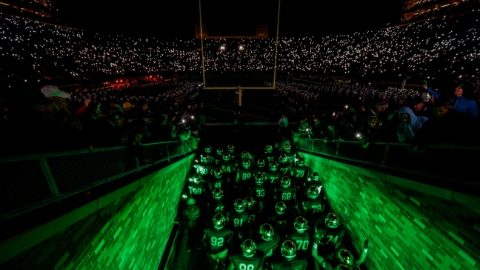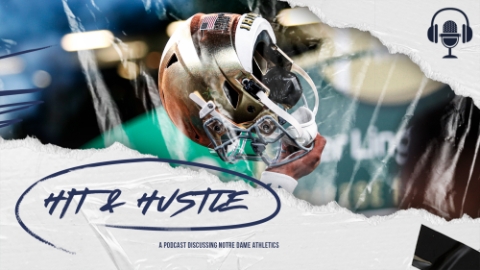
Alabama has been the measuring stick for college football programs for the last decade. Even when they didn’t win a championship, they were still setting the bar for everyone else to reach.
I don’t know if Kirby Smart and Georgia have officially dethroned them or simply joined them, but it’s far more than entering the chat. Back to back championships is one thing. How they accomplished it is another.
The roster was loaded with talent at every position, but the bulk of the attention in the last couple of years has been directed towards their defense. It makes sense when considering they had five first round picks and eight drafted overall from the 2021 team.
It was a complimentary football team, though. The defense was elite. So was the offense. They finished in top-four in OF+ (combined FEI and SP+ rankings for offense) the last two seasons. They also finished in the top-four in points per drive. They accomplished this with a pro-style offense.
Their coordinator, Todd Monken, recently left for the same position for the Baltimore Ravens. They had the kind of offense that Notre Dame should want to run.
It was pretty clear what Marcus Freeman wanted in a coordinator based on not only who was in contention for the position, but also what he said about it on Monday.
”It still goes down to complimentary football and that's what I love more than anything is that you can have varying tempos, you can really control the clock if you need to. It's still an offense predicated on being able to run the ball.
“I want to be able to run the ball. This is not going to be a pass-first offense, but it really creates opportunities to have success in the pass game because of your ability to be able to run the ball, and all those things go together for complimentary football. You can look at statistics, you can look at any numbers you want, but to me, from my defensive background, the ability to play complimentary football and to have an offense that doesn't always have to go 1000 miles an hour, but also doesn't have to huddle every single snap is really what it takes me to have a successful program; a successful team on both sides of the ball.”
By the numbers, Georgia was a run-first offense. They ran the ball 53.5% of the time in 2022 and were even more run-heavy in 2021 (56.9%). That’s who they were looking at from a big picture perspective.
They had a strong offensive line and a ton of talent in the backfield and they had the ability to bully a lot of teams. They weren’t stuck in that mentality, though.
When they played Oregon to open the season, they threw for 439 yards (ran for 132) and won in a blowout. They ran for 292 when they put it on Auburn four weeks later. They capped off their season by doing whatever the heck they wanted against TCU by rushing for 254 and throwing for 335. Georgia had a run-first offense that could dismantle the defense with the pass.
They were a run-first offense that was also 15th and 3rd in the country in explosive passing plays (receptions of 20+ yards). They were an offense that had their strongest players at tight end, running back, and offensive line and were still elite. That’s the model that Gerad Parker should attempt to emulate when shaping the Notre Dame offense.
A team can be run-first, play heavy with personnel, and be elite. Georgia is the proof of concept.
There’s going to be weeks where Parker is going to have to run it 47 times like Notre Dame did against Clemson last season. There will be other weeks where his quarterback needs to throw for 300 to put up points, which is something Sam Hartman did eight times last season.
Pro-style fits the personnel at Notre Dame. Run-first fits them as well. That can lead to an elite offense and it’s now up to Parker to lead them towards that.
Run-first and being explosive in the passing game. Get you a coordinator who can do both. Georgia had one. We’ll see if Notre Dame has one.
2. If you’re going to be a run-first team, you better run the ball better than Notre Dame did last season. I know they had some strong games, but they finished 89th in EPA (expected points added) per rush.
That basically means that they weren’t as successful running the ball when adding context to a rushing attempt. A four yard gain on 2nd and 10 might be a positive gain, but it’s negative in terms of EPA. That kind of thing and the lack of explosiveness in the run game is a big reason why they only finished above the 50th percentile in EPA per rush in five games last season with all five coming in the final seven games of the season.
(Percentile is based off of a team's performance against all single-game FBS vs FBS performances in that statistic in 2022)
Last year the offense was fairly predictable, mostly because of the limitations at quarterback. The best option on 2nd and long for Tommy Rees was to probably run the ball rather than throw it even if analytics say it’s better to throw there. Those analytics aren’t accounting for Drew Pyne having a run where he completed only 50% of his throws in four of five games or for 3rd and long basically ending up as a concession to punt because of the quarterback.
I think there were a lot of run calls that were made or that Rees stuck with against bad numbers in the box because he wasn’t confident in the alternative. Parker should feel a lot more confident about his options this year.
He did mention at his press conference the ability to deal with “hat counts when they may be outnumbered” in the box and with better quarterback play and more playmaking at receiver, it can force defenses to not get away with using as many bodies to stop the run and that should open things up for them more frequently.
3. Again, we heard Parker emphasize the same thing Freeman had talked about last season. Notre Dame wants to be an O-line driven program.
That’s great and the right way to approach it for Notre Dame. They’ve proven they can recruit and develop as well as almost anyone at the position and leaning into it is the right move.
Making a strength stronger is always a good idea.
This leads into how critical the offensive line coach hire is going to be. I know Notre Dame likes to claim they are “O-line U” and they can argue that based on some individuals who have gone on to become high NFL Draft picks and then All-Pros at the next level. They have an All-American at left tackle this year in Joe Alt and may have another candidate in Blake Fisher at the other spot. That’s some pretty impressive bonafides.
In terms of producing the best units in college football, they have no argument to make the “O-line U” claim.
Alabama can make that claim. They’ve won the Joe Moore Award as the best offensive line in college football twice. They’ve been a finalist in six of the eight years they’ve handed out the award.
Michigan can make that claim right now. They’ve won the Joe Moore Award two years in a row.
Notre Dame can’t come close to that right now and if Freeman and Parker really want this to be an O-line driven program, that has to change.
Harry Hiestand did a good job at Notre Dame and developed some of the best offensive linemen to ever play for the program. He didn’t consistently have the Irish as one of the best offensive line units in the country, though. That has to be the goal with hiring the next coach.
Can this coach get the group to play at the highest level together year in and year out and also upgrade the talent even more than it is right now? If he can do that, then Notre Dame can begin arguing they are “O-line U” in college football and the offense can go places they haven’t before.
4. I’m sure no one reading this missed the reporting from ISD’s Matt Freeman that former Georgia offensive line coach Matt Luke was hosted by Notre Dame this week as they look to fill that offensive line coaching vacancy.
Going after someone like Luke, who took a step back from coaching after Georgia’s 2021 national championship season, is a pretty strong indication that Marcus Freeman is backing up his words when he talks about his program being an O-line driven program. Luke not only coached one of the best units in college football at Georgia (20th in sack rate, 11th in average line yards, and 7th in stuff rate, 7th in yards per carry vs Power 5 competition), but he has a reputation as a great recruiter.
He did a great job at Georgia and at Ole Miss helping to land numerous elite prospects that everyone in the SEC was after and several of them were national prospects. There may be a question about him making the transition to a place like Notre Dame, though he did coach at Duke under David Cutcliffe, but adding him to the staff would be a statement that Freeman wants to take the talent up front to another level.
5. I don’t mean to keep dissecting the ghost of Mike Elston’s recruiting misses again and again, but it comes up when reviewing the defensive line before the spring.
Notre Dame needed to add Javontae Jean-Baptiste in the transfer portal much like they needed Jordan Botelho to have his second half of the season break out in ‘22. If both of those things didn’t happen, the outlook would be pretty bleak at defensive end.
Even with those two, there’s NaNa Osfafo-Mensah entering his fifth year with very little production and Alex Ehrensbeger entering his fourth year without yet breaking into the rotation. That leaves the primary depth behind those players consisting of three second year players at end and Vyper: Aiden Gobaira, Joshua Burnham, and Junior Tuihalamaka.
I’m not sure Tuihalamaka is a long term solution at Vyper, but they might need him in the short term. While there’s plenty of reasons to be optimistic about the potential of Gobaira and Burnham as future starters, neither of them played last season. They are just getting started.
Notre Dame was in a bit of a similar situation in 2017 when they had three sophomore ends who had to grow up quickly on the field. Daelin Hayes, Julian Okwara, and Khalid Kareem were counted on that season and they did some good things. They just weren’t quite ready for primetime just yet.
Hayes finished 7.5 havoc plays (tackles for loss, pass breakups, force fumbles, interruptions) and had an 8.5% pass rush win rate. Julian Okwara finished with 6.5 havoc plays and a 14.4% pass rush win rate. Khalid Kareem finished with 7.5 havoc plays and a 14.8% pass rush win rate.
Fast forward to Isaiah Foskey as a sophomore and he had about the same level of production: 6 havoc plays and a 12.8% pass rush win rate.
It’s a fair expectation for Notre Dame to get those kinds of numbers from two out of the three sophomores I mentioned. I don’t think there is a Stephon Tuitt in this group (11 sacks in year two), but if Al Washington has them on the Okwara/Kareem/Foskey development path, it would solidify the position this fall.
6. Back in December of 2019, The Athletic’s Bruce Feldman wrote a story on Mel Tucker’s recruiting plan at Colorado. It’s funny to look at now knowing that three months later he would be at Michigan State, but there are some good nuggets in the piece about Tucker’s philosophy with player evaluation that he was talking about with regards to building a roster that pertains to Notre Dame currently.
The main piece to take away from it that always hits home again and again is that size matters.
“I don’t even want them on the (CU recruiting) board unless they have size; like we’re not even gonna recruit ’em,” Tucker said, “because if you make an exception, you gonna have a team full of exceptions. You just recruit to what you need. It’s a little bit harder. There might be a kid that’s 6-feet and 245 pounds at defensive end that wants to come, and he might be a good player but at the end of the day, you end up playing against Georgia or Alabama, that kid will have a hard time holding up.”
He expanded on this while talking about how Smart knew Georgia needed to get bigger when he arrived (mission accomplished) and it fits into what Mike and I have discussed recently on Power Hour. There are certain players who can help you get to 10 wins, but are going to struggle when it comes to winning against the elite teams. For all of the player evaluation wins Brian Kelly had over the second half of his time at Notre Dame, his staff took too many exceptions.
It obviously isn’t all about being big. Projectable athletic traits are critically important. It all has to go together with playing ball, but technique and recognition can be improved. The other stuff, for the most part, can’t.
That’s one thing that stands out about Marcus Freeman’s first full recruiting class that Notre Dame just signed. It’s big across the board with Micah Bell being the only one undersized for his position and he has the one special trait (speed) that made him someone that even Georgia viewed as a take despite how much they value size. Even with Joe Otting, who is going to need to add weight at Notre Dame, he’s 6’4” and projects at center. That’s even without mentioning that he might be the most easy mover at center I’ve seen in a long time.
There are going to be some concerns about Notre Dame being undersized at certain positions this season, but I don’t see that as being a problem in the future because they aren’t making the exceptions that they used to.
Men's Fanatics Branded White Notre Dame Fighting Irish High Hurdles T-Shirt


